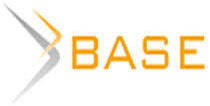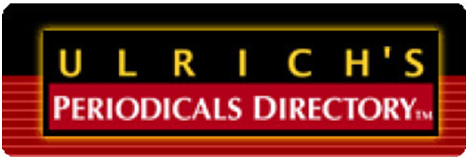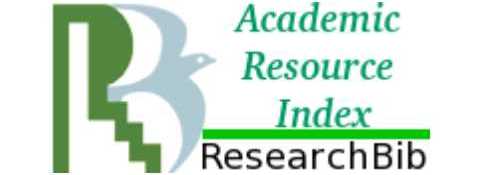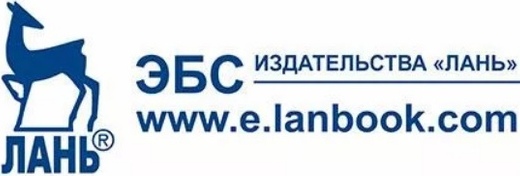Optimization of direct sales of the hotel based on the concept of business process management
The introduction of innovative technologies in the hospitality industry leads to a transformation of the working methods of hotels and other accommodation facilities. These changes are related to the need for in-depth analysis of hotel processes and their evaluation in order to implement process optimization based on them. The use of innovative approaches is the way to maintain a high level of service and competitive advantages. One of the ways to achieve these goals is the concept of business process management, which is widely used in other industries. The focus of this management approach is on business processes, sets of coordinated actions performed by users to achieve the intellectual goals and objectives of the company and their notation, process modeling. The main purpose of this study is to explore the possibilities of using BPM technology and reengineering business processes in a hotel and to assess its possible impact on an organization providing services with intensive and dynamic human-to-human interaction. The article describes the modeling of business processes and the use of reengineering in the hospitality industry with an emphasis on improving direct telephone sales through the use of the CRM system. After modeling the current state of the selected process using the ARIS methodology, the same process was subjected to reengineering through the use of the CRM system. This implementation shortened the entire process (mainly the number of actions required to complete) and allowed the front office employee to be more customer-oriented. Automation of time-consuming processes can reduce the number of errors caused by the human factor and increase the convertibility of booking requests and their overall value.
Novichkova, I. A., Platov A. V. and Tarchokov S. K. (2024), “Optimization of direct sales of the hotel based on the concept of business process management”, Research Result. Business and Service Technologies, 10 (1), pp. 118-132. DOI: 10.18413/2408-9346-2024-10-1-1-0
















While nobody left any comments to this publication.
You can be first.
Aksu, A. A. (2001), “Re-engineering revisited: a simulation approach”, Business Process Management Journal, 7 (2), pp. 131-138.
Becker, J., Rosemann, M. and Von Uthman, C. (2000), “Guideline for business process modelling”, Business Process Management, 2, pp. 30-49.
Chacko, H. E. (1998), “Designing a seamless hotel organization”, International Journal of Contemporary Hospitality Management, 10 (4), pp.133-138.
Chacko, H. E., Williams, K. and Schaffer, J. (2012), “A conceptual framework for attracting Generation Y to the hotel industry using a seamless hotel organizational structure”, Journal of Human Resources in Hospitality and Tourism, 11 (2), pp.106-122.
Chalupa, S. and Petricek, M. (2020), “The Aplication of Business Process Management in the Hospitality Industry: A Case Study”, IBIMA Business Review, ID 301930.
Corradini, F., Ferrari, A., Fornari, F., Gnesi, S., Polini, A., Re, B. and Spagnolo, G. O. (2018), “A guidelines framework for understandable BPMN models”, Data and Knowledge Engineering, 113, pp.129- 154.
Curtis, B., Kellner, M. I. and Over, J. (1992), “Process modeling”, Communications of the ACM, 35 (9), pp. 75-90.
Doebeli, G., Fisher, R., Gapp, R. and Sanzogni, L. (2011), “Using BPM Governance to Align Systems and Practice”, Business Process Management Journal, 17 (2), pp. 184– 202.
Dumas, M., Rosa, M. I., Mendling, J. and Reijers, H. A. (2013), Fundamentals of Business Process Management, Berlin, Springer, 344 р.
Hammer, M. (2010), What is business process management? In: J.von Brocke a M. Rosemann, Handbook on Business Process Management, Berlin, Springer, pp. 3-16.
Hammer, M., Champy, J. (2006), Reengineering the Corporation: A Manifesto for Business Revolution, Harper Collins, London, 272 р.
Han, J., Lustigova, Z. and Chalupa, S. (2016), “Resort Gastronomy Stand Simulation”, In: Sbornik Mezinarodni Vedecke Konference Hotelnictvi, Turismus a Vzdelavani, proceedings of 8th International Annual Scientific Conference on Hotel Services, Tourism and Education, Praha: Vysoka Skola Hotelova and Praze, Czech Republic, pp. 38- 46.
Hunt, D. V. (1996), Process Mapping: How to Reengineer your Business Processes, Wiley, New York, 288 р.
Jeston, J., and Nelis, J. (2014), Business process management, Routledge, 688 р.
Kalenkova, A. A., Van der Aalst, W. M., Lomazova, A. and Rubin, V. A. (2017), “Process mining using BPMN: relating event logs and process models”, Software and Systems Modeling, 16 (4), pp. 1019- 1048.
Kozak, A. M. and Gürel, A. D. (2015), “Service design in hotels: A conceptual review”, Turizam: međunarodni znanstveno-stručni časopis, 63 (2), pp. 225-40.
Krstić, B., Kahrović, E., and Stanišić, T. (2015), “Business process management in hotel industry: A proposed framework for operating rocesses”, Ekonomika, 61 (4), pp. 21-34.
Mariello, A., Dalcastagné, M. and Brunato, M. (2020), “HotelSimu: Simulation-Based Optimization for Hotel Dynamic Pricing”, International Conference on Learning and Intelligent Optimization, Springer, Cham, pp. 341- 355
Nebel III, E. C., Rutherford, D. and Schaffer, J. D. (1994), “Reengineering the hotel organization”, Cornell Hotel and Restaurant Administration Quarterly, 35 (5), pp. 88-95.
Özdemir, A.İ., Çolak, A. and Shmilli, J. (2019), “Business process management in hotels: with a focus on delivering quality guest service”, Qual Quant, 53, pp. 2305–2322.
Platov, A. V., Novichkova, I. A. (2023), Marketingovye kommunikatsii. [Marketing communications], Obshhestvo s ogranichennoy otvetstvennostyu "Izdatelstvo "KnoRus", Moscow, Russia.
Poulova, P., Cerna, M., Hamtilova, J., Malý, F.Kozel, T., Kriz, P. ... and Ulrych, Z. (2019), “Hotel process simulator”, In International Conference on Blended Learning, Springer, Cham, pp. 128-136
Reijers, H. A. and Mendling, J. (2010). “A study into the factors that influence the understandability of business process models”, IEEE Transactions on Systems, Man, and Cybernetics-Part A: Systems and Humans, 41 (3), pp. 449-462.
Sinclair, M. and Sinclair, C. (2009), “Improving hotel efficiency through integration of service and project management cultures”, International Journal of Hospitality and Tourism Administration, 10 (4), pp. 344-360.
Tan, W., Xu, W., Yang, F., Xu, L. and Jiang, C. (2013), “A framework for service enterprise workflow simulation with multi-agents cooperation”, Enterprise Information Systems, 7 (4), pp. 523-542.
Weske, M. (2012), “Business process management architectures”, In Business Process Management, Springer, Berlin, Heidelberg, pp. 333-371.
Xuhua, H., Spio-Kwofie, A., Udimal, T. B. and Addai, M. (2018), “Entrepreneurial innovation strategies; an option for small hotels’ growth in Ghana”, Journal of Global Entrepreneurship Research, 8 (1), pp. 30.